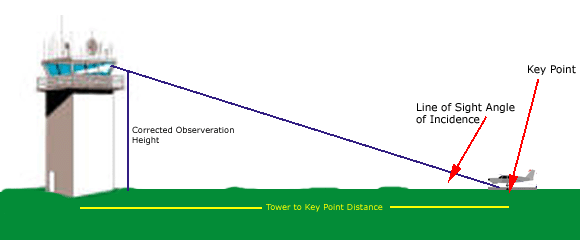Purpose:
In the past, Airport Traffic Control Tower (ATCT) siting decisions have
been significantly influenced by the upper height limits imposed by
terminal procedures (TERPS) and controller opinions. Because tower
siting (height and location) affects airport safety and construction
costs, the FAA had no means to measure quantitatively
the improvement in air traffic controller visibility that can be gained by
changing the tower height and location on the airport surface, and there was no
required minimum criterion for tower height.
Background: FAA human factors specialists (ATO-P R&D) and Airport Facilities
Terminal Integration Laboratory (AFTIL) personnel created and conducted
tower siting simulations of different existing towers to establish a
performance baseline of a controller's ability to detect and identify
aircraft on the airport surface at distance points.
Research results were used to determine requirements for future
tower construction projects, ensuring safe minimums and constraining
costs of the nation's airport investments.
Prior to the simulation, human factors researchers refined and
validated an experimental approach and methodology to evaluate the human
performance characteristics affecting tower siting decisions.
This effort supports the FAA Flight Plan Goals for Increased
Safety regarding the FAA Safety Management System (SMS) initiative to
update the FAA Order for tower siting; establishes quantifiable measures
of human performance for tower siting decisions; and leverages work on
the probability-of-discrimination (detection, recognition, and
identification) done by the Army Research Laboratory in Adelphi,
Maryland. The visibility analysis tool
that was created by this effort generates probability of discrimination
curves and assesses the impact of tower height on visibility. The visibility analysis tool is available on the Internet to all
tower siting project teams and is being used by them in planning for new
control towers.
